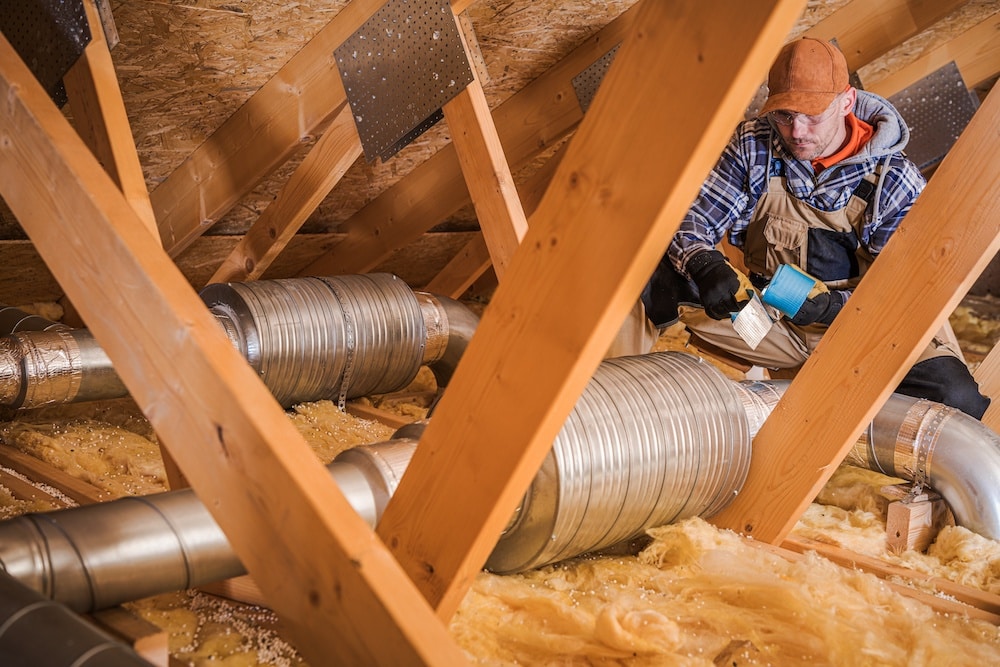Even though insulation lasts 15 to 20 years, you should inspect your attic insulation twice yearly. This will help you catch the early signs that you will soon need to replace it.
As you inspect your attic, you should also pay attention to the temperature in this part of your home. You have a problem if it’s more than 20 degrees warmer than the outdoor temperature.
How Does Your Attic Insulation Affect the Indoor Temperature?
The ideal situation for an attic or crawl space is that insulation only covers the attic roof and walls. If the floor is free of insulation, hot air will rise and cool off before circulating back down into your living space. When you insulate the attic floor, that cooler air won’t be able to escape the attic.
Additionally, a lack of roof vents will trap hot air inside your attic. This will keep the temperature inside your attic from dropping to a more acceptable level. If your home doesn’t have enough vents, you can have additional vents installed.
How to Tell If Your Attic Is Too Hot
You can tell that you have an overheated attic if the wood beams feel hot to the touch. Be cautious when touching anything in a hot attic. Exposure to higher temperatures over an extended period will cause surfaces to become extremely hot.
The heat will also affect metal, such as air ducts and staircase railings. If the attic temperature is high enough, metal surfaces can be hot enough to burn the skin.
Higher Temperatures Can Damage Your Insulation
Heat and condensation can pose a problem if you use fiberglass batts for your attic insulation. Prolonged heat in your attic can cause condensation and dampen your insulation.
When combined with the heat, that moisture can lead to water damage and mold growth. If the air in your attic feels humid, check behind the insulation for water damage or mold.
A Fan Can Protect Your Insulation
By taking steps to keep the heat and humidity in check, you can prevent your attic insulation from suffering premature damage. In addition to adding more vents, you may need an electrician to install a roof fan. This is a small investment that will protect your attic and insulation all year round.
A roof fan will draw in cooler air from outside, helping to maintain a more moderate temperature inside your attic. A silent fan with metal blades will rotate faster without creating disruptive noise. You should also look for a fan with a built-in screen to keep birds, rodents, and insects from accessing your attic.
Air Sealing Can Help
You’ll want to control the exchange of hot and cool air with your roof vents and fan. Leaks in your roof or attic walls can allow heat and moisture to accumulate inside your attic. When you hire a contractor to seal those leaks with spray foam insulation, you’ll be better able to control the temperature in your attic.
We’ll Help You Protect Your Home with Better Attic Care
You can schedule an evaluation of your attic insulation when you contact Attic Projects. Our team will determine whether you need new insulation, vents installed, or duct repairs. Call us today!




